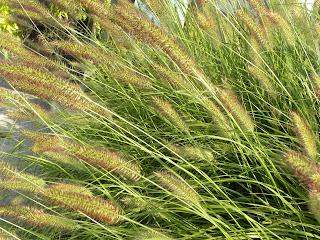Tricyrtis formosana 'Samurai' (Toad Lily); the most popular cultivar, it has variegated foliage with creamy almost gold edges.

In the Garden Hall Courtyard:
Actaea simplex 'Black Negligee' (Black Bugbane); Black foliage and stems with purple-tinted white flowers.

In the Garden Hall Courtyard:
Aconitum 'Cloudy' (Monkshood). This cultivar is characterized by its upright habit. Soft blue and white flowers are held upon thick, strong, flowering stems.

In the Show Garden:
Pinus thumbergii 'Oculus-draconis' (Dragon's Eye Pine). It gets its name from the banded yellow and green needles which give the illusion of an eye.

In the Nature Garden:
Aciepias tuberosa (Butterfly Milkweed); An Ontario native, it has striking orange flowers in summer followed by these spectacular seed pods. This plant is a primary food source for Monarch butterflies.

In the Knot Garden:
Iris germanica 'Immortality' (Tall Bearded Iris). A beautiful white iris known for its consistent rebloom in late summer/early fall.
























